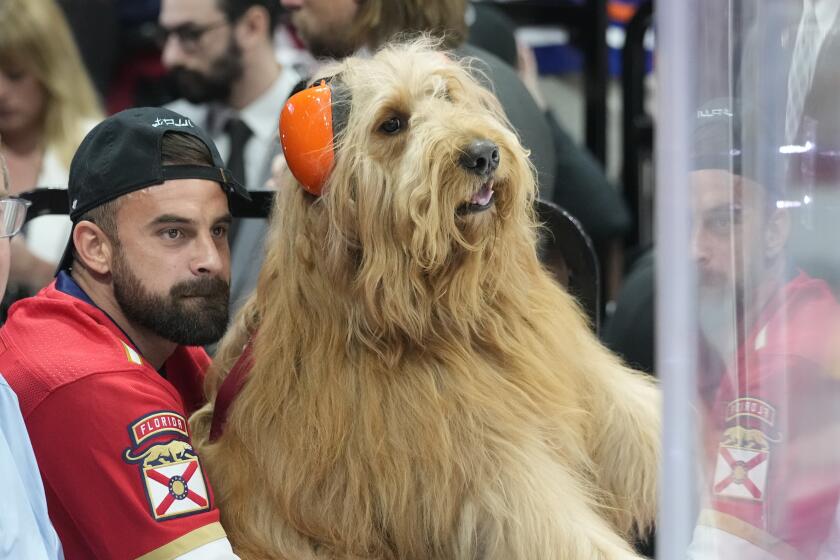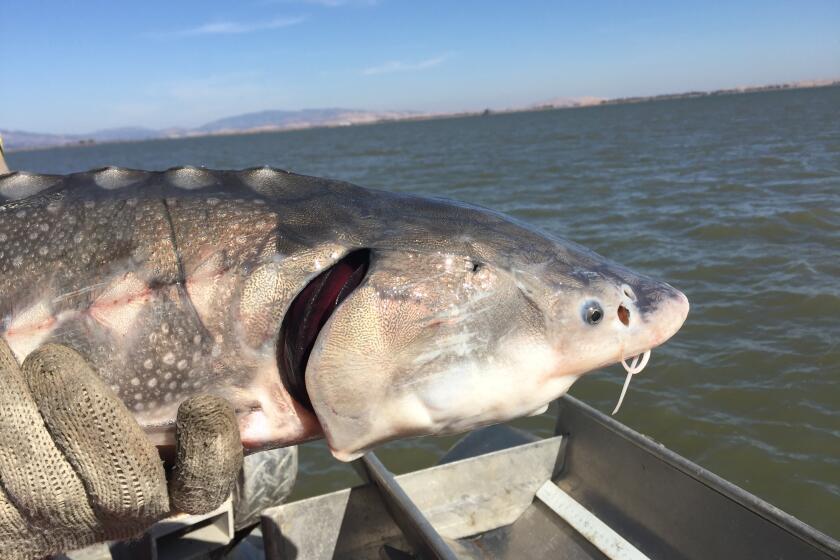Dog-Eat-Dog World : Independent Pet Shops Train Wary Eye on Chain Rivals
John and Kimberly Keigwin bought Noah’s Ark Pet Kingdom here in 1988 as a business and a labor of love.
Blending his retailing knowledge with her love of animals, the Keigwins patiently groomed the store, installing new fixtures and updating ragged accounting and inventory techniques. Later they added an adjacent storefront.
But the Keigwins are keeping a wary eye on new competition: Super Pets, a warehouse-style chain store that opened less than a mile away. So far, Noah’s Ark isn’t in danger of sinking, but the Keigwins know that a properly run warehouse store can be dangerous to their financial health.
“It’s a lot tougher than it was when we started . . . [because] consumers are smarter and there’s just more competition,” he said.
Experts estimate that 90% of the nation’s 18,000 pet stores are run by independents, but these small operators--and their once-sleepy industry--is being targeted for radical changes by well-capitalized competitors.
Trying to cash in on America’s growing love affair with pets, regional powerhouses around the country are building war chests to establish a national presence. They want a piece of the $12 billion annually that Americans now spend to feed and outfit domestic animals. Grooming and veterinary bills add another $4 billion.
“The national chains are starting to happen in a big way,” said Jack Sweet, editor of Pet Product News magazine in Irvine. “We’re at a phase where the mom-and-pop independents are being forced to find a niche where they can compete. It’s the exact thing you saw in the home video industry about eight or nine years ago when Blockbuster started rolling.”
Among the chains’ recent moves:
* On May 4, Petco Animal Supplies Inc. in San Diego completed a $43-million stock offering to finance expansion in California and 12 other states where it now operates 218 stores. “We used to get a call every week from competitors who wanted to talk about being acquired,” said Petco Chairman Brian K. Devine. “Now we get a call just about every day.”
* Phoenix-based PetsMart, which raised $125 million in a 1988 public offering, said in February that it would pay $96 million to acquire PetStuff, a 56-unit chain headquartered in Atlanta. PetsMart, which has more than 30 stores in California, plans to blitz Southern California with an additional 40 by the end of next year.
“We know competition is dog-eat-dog out in California,” said PetsMart spokeswoman Cozette Phifer. “But we think our concept is broad enough to do very well.”
* Pet Food Warehouse, a St. Louis Park, Minn., chain, recently completed a $21-million stock offering. The 6-year-old company, which has 22 stores, plans to add as many as 15 in its Midwest stronghold.
*
Chain stores are proliferating, retail industry observers said, because consumers perceive the new stores as offering attractive merchandising, broad selection and aggressive pricing--particularly on premium chows previously sold only through smaller shops.
Traditionally, Americans bought most of their pet food in grocery stores, where names such as Purina dominated. But consumer concern about their own diets has spilled over into what their pets eat, and Americans are increasingly likely to pay more money for premium chows that promote stronger teeth, shiny coats and overall better health.
Science Diet and Iams, two leading premium chows, are sold only through pet stores, giving independents and chains a competitive advantage over supermarkets. The only dark cloud on the horizon: Discount mass-market retailers such as Wal-Mart are developing and marketing their own lines of upscale pet foods.
The consolidation is generating casualties--even among chains.
Pet Metro, an Irvine-based four-store chain that advertises itself as “the ultimate pet metropolis,” filed for Chapter 11 bankruptcy protection in April. Pet Metro, which had hoped to raise up to $25 million in an initial public offering of stock in April, was forced into Bankruptcy Court by disgruntled bondholders. The offering “just didn’t happen,” President E. Todd Dean said. “It hit a brick wall, and we were left with a lot of” debt.
Experts say such growing pains are an inevitable result of the industry dogfight.
“There will be a couple of really big players, a couple of big national chains,” Sweet said. “But the rest of the market will be made up of regional chains and the single-location stores.”
New York investment firm PaineWebber Inc. has picked Petco and PetsMart, which have deep pockets and strong, retail-oriented management teams, as logical survivors in the ongoing consolidation. A PaineWebber retail analyst recently described the two chains as “the Coke and Pepsi” of the pet retail world.
*
Still, some experts say, there’s plenty of room for expansion by pet store chains.
A quick glance at Pet Industry News’ recent listing of the top 100 store operators shows a fragmented industry. PetsMart, with 186 stores and a 1995 revenue forecast of $1 billion, tops the list. But in 10th place is Just for Pets in Topsfield, Mass., which has just five stores and $15.3 million in revenue.
The chains agree there is no single road to becoming the top retail dog.
Petco, for example, builds both superstores--some as large as 25,000 square feet--and small stores that measure about 12,000 square feet. Its expansion plan calls for stores in neighborhood shopping centers, usually near a grocery store, where consumers do their day-to-day shopping.
PetsMart builds only superstores, some measuring 30,000 square feet. And it puts them in “power centers” alongside large retailers such as Home Depot.
*
But, in keeping with a growing trend in the pet store industry, neither leading chain sells dogs or cats. Petco and PetsMart--as well as Noah’s Ark and a growing number of independents--instead direct customers to local humane societies and kennels, which are overflowing with animals. Some stores also offer dog and cat adoptions. The stores do sell smaller animals, such as guinea pigs, hamsters, gerbils and birds.
While chain stores are using their substantial buying power to carve out market share, editor Sweet believes that smart independent operators can survive.
“Even in video stores, there are viable independents,” he said. “You’ve just got to find the right niche . . . such as ‘We do birds better than anyone else.’ ”
John Keigwin is betting that independent pet stores--like well-stocked hardware stores, locally owned coffee shops and mom-and-pop video stores--can survive if they provide a distinctly personal touch that many consumers don’t find at larger, chain-operated stores.
“Some of this business is the pets,” Keigwin said, “but an awful lot of it is people, the personal service that a shop like ours can deliver. We’re not talking about widgets. We really love animals.”
(BEGIN TEXT OF INFOBOX / INFOGRAPHIC)
Small vs. Large
Although the majority of the nation’s estimated 18,000 pet stores are still operated by independents, large chains offering lower prices and vast inventories are on the upswing. U.S. chain pet stores and 1994 revenue:
1994 revenue Chain Headquarters Stores (in millions) PetsMart Phoenix 180 $601 Petco San Diego 218 188 Pet Supplies “Plus” Livonia, Mich. 77 140* PetStuff Inc.** Atlanta 56 115 Petland Inc. Chillicothe, Ohio 146 96 Pet Care Superstore Inc. Aurora, Ill. 65 76* Pet Food Warehouse St. Louis Park, Minn. 21 58 Pet Supermarket Fort Lauderdale 40 47 Sea World Roseville, Mich. 3 18 Just For Pets Topsfield, Mass. 5 15*
* Estimate
** Recently acquired by PetsMart
Source: Pet Product News magazine; Researched by GREG JOHNSON / Los Angeles Times






